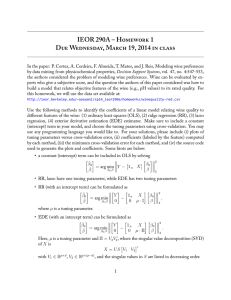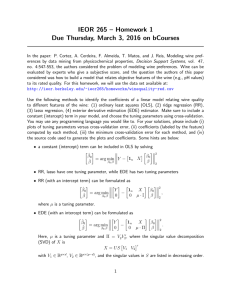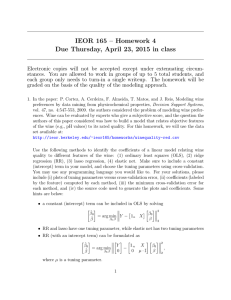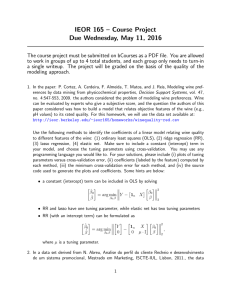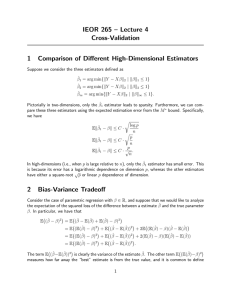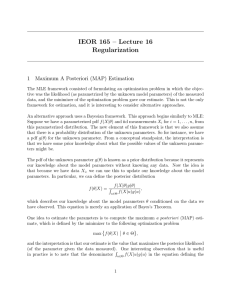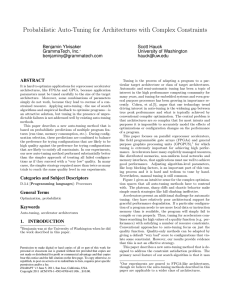IEOR 265 – Homework 1
advertisement
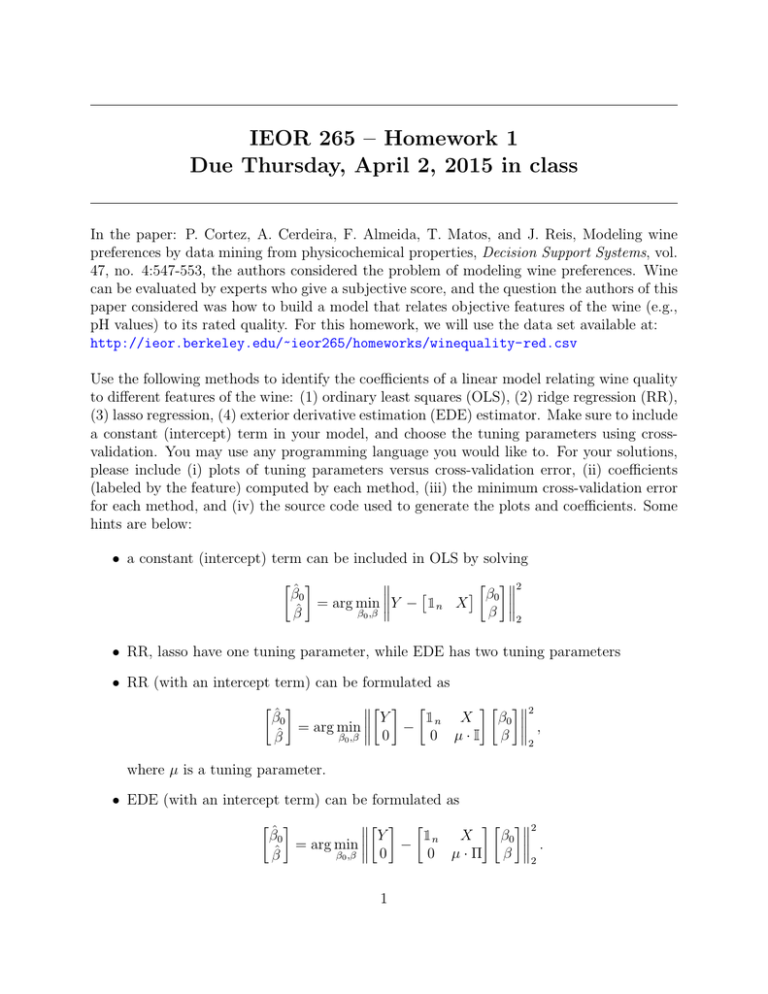
IEOR 265 – Homework 1 Due Thursday, April 2, 2015 in class In the paper: P. Cortez, A. Cerdeira, F. Almeida, T. Matos, and J. Reis, Modeling wine preferences by data mining from physicochemical properties, Decision Support Systems, vol. 47, no. 4:547-553, the authors considered the problem of modeling wine preferences. Wine can be evaluated by experts who give a subjective score, and the question the authors of this paper considered was how to build a model that relates objective features of the wine (e.g., pH values) to its rated quality. For this homework, we will use the data set available at: http://ieor.berkeley.edu/~ieor265/homeworks/winequality-red.csv Use the following methods to identify the coefficients of a linear model relating wine quality to different features of the wine: (1) ordinary least squares (OLS), (2) ridge regression (RR), (3) lasso regression, (4) exterior derivative estimation (EDE) estimator. Make sure to include a constant (intercept) term in your model, and choose the tuning parameters using crossvalidation. You may use any programming language you would like to. For your solutions, please include (i) plots of tuning parameters versus cross-validation error, (ii) coefficients (labeled by the feature) computed by each method, (iii) the minimum cross-validation error for each method, and (iv) the source code used to generate the plots and coefficients. Some hints are below: • a constant (intercept) term can be included in OLS by solving [ ] [ ] [ ] β0 2 β̂0 = arg min Y − 1n X β 2 β0 ,β β̂ • RR, lasso have one tuning parameter, while EDE has two tuning parameters • RR (with an intercept term) can be formulated as [ ] [ ] [ ]2 [ ] Y 1 X β0 β̂0 n , − = arg min 0 0 µ · I β 2 β0 ,β β̂ where µ is a tuning parameter. • EDE (with an intercept term) can be formulated as [ ] [ ] [ ]2 [ ] Y 1n X β0 β̂0 . − = arg min 0 0 µ · Π β 2 β0 ,β β̂ 1 Here, µ is a tuning parameter and Π = V2 V2′ , where the singular value decomposition (SVD) of X is [ ]′ X = U S V1 V2 with V1 ∈ Rp×d , V2 ∈ Rp×(p−d) , and the singular values in S are listed in decreasing order. 2
